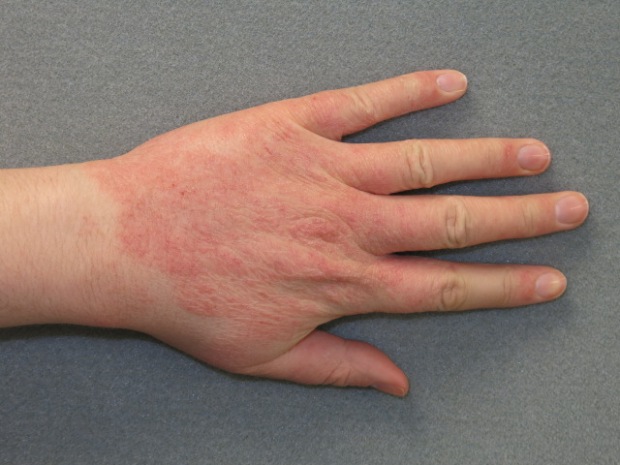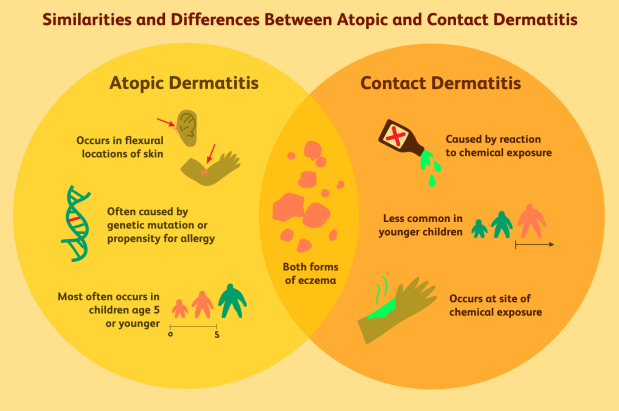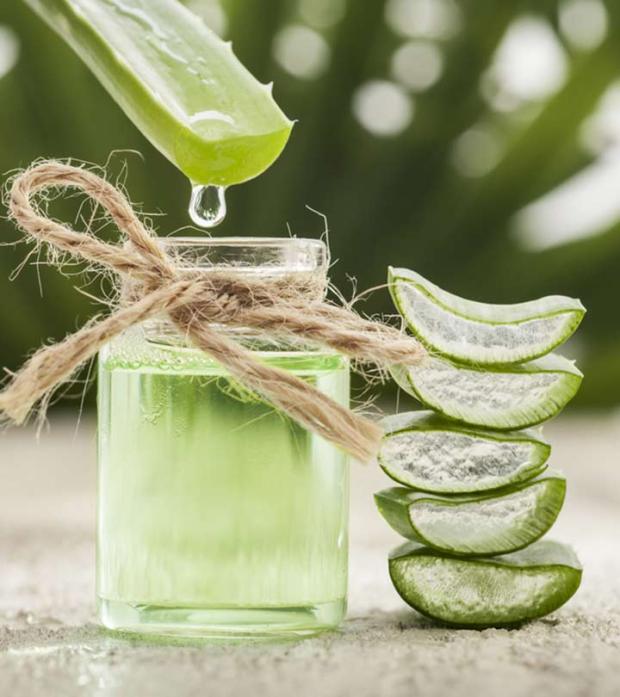
Hands are a common part of eczema because they are often exposed and likely to be triggered by eczema. Hand eczema, or hand dermatitis, refers to any type of eczema that develops on the hands. If a child has eczema of hands, consult your doctor for a proper diagnosis and treatment. Eczema is chronic and cannot be cured, but it can be controlled and managed. The key to preventing eczema flares is to treat the symptoms as soon as they appear.
However, What causes eczema in babies has been an issue of much debate. Since, the cause is not known, there are many theories and parents are left speculating whether it’s food, or the pet, or medication, or something they did that is causing their child to flare-up. What triggers one baby’s eczema won’t trigger another’s.
What are the causes of eczema on hands?

The eczema is a skin disease that most often an allergy.
The hands are constantly in contact with many products that can be allergenic. In addition, some people have constitutionally dry skin and therefore have a tendency to have an eczema of dry hands.
Finally, many irritating products, as well as cold, water and dry air, aggravate the tendency to have dry skin of hands.
The most common allergens are:
RUBBERS
These are the vulcanizing agents of the rubbers which are involved, and in particular thiuram-mix, mercapto-mix, Carbamate and Mercaptobenzothiazole.
The most exposed professions are users of rubber gloves (nurses, food and more).
METALS
- Nickel (nickel eczema ) is the leader in metallurgy or mechanics but also in traders who handle coins.
- Chromium and cobalt are also common, found in metallurgy, cement eczema , textile dyes, leather tanning.
Plants
The plants and their derivatives (rosin, sesquiterpene lactones, Balsam of Peru) are at the origin of eczema of the hands at the florists, the gardeners and horticulturists, the farmers, the woodworkers, but also the do-it-yourselfers and gardeners to the House.
Cosmetics
The main allergens are fragrances (fragrance mix), preservatives (isothiazolinones, Chlorphenesin, Phenoxyethanol, triclosan) and surfactants (Cocamidopropyl betaine, lauryl and decyl glucoside).
Protein
Originally described in food professionals, protein eczemas are characterized by redness, itching, and immediate swelling of the urticaria type, followed by the appearance in one to two days of vesicular eczema evolving over the course of the exposures in chronic eczema predominant on the back of the hands and the fingers or the forearms. The allergens involved are numerous, they are proteins contained in fruits and vegetables, fish, dairy products, meats.
What are the Symptoms and Complications of hand eczema?

The atopic dermatitis appears as redness and drying of the skin, which is accompanied by itching. It usually occurs during childhood and may disappear entirely before adulthood. It most often affects the skin behind the knees and around the elbows, as well as the face. In infants, it appears on the chest, face, scalp and neck. Atopic people who contract the herpes simplex virus may develop eczema herpetiformis , which is a dangerous secondary infection of inflamed skin, characterized by an aggravated rash and fever.
Contact dermatitis often causes dry, extremely itchy rashes of red color. Depending on the factor that triggered the reaction, the rash may be painful or create blisters that ooze before forming crusts. Other reactions caused by irritants may cause swelling in the affected area. The affected area may give an indication of the type of allergen or irritant responsible. The most serious forms of contact dermatitis, such as those caused by severe latex reactions, may be accompanied by a life-threatening allergic reaction called anaphylaxis, a response to the allergen that spreads throughout the body.
The eczema dyshidrotic causes blisters (the “bulbs”) on the palms, sides of the fingers and the soles. It causes itching that can be accompanied by a burning sensation; the skin may show small cracks or peel.
The nummular eczema manifests itself in the form of red lesions shaped coins on the limbs and torso, which are accompanied by itching and a flow.
The varicose eczema is in the form of heated plates where skin flakes near the lower legs and ankles. Over time, these plaques may turn dark brown in color.
What are the alternate solutions to prevent from hand eczema?
Skin hygiene: it must be gentle, ie non-aggressive and daily. Thus, the bath water should not be too hot (about 35 ° C) and it should use a soap-free washing product that will not alter the protective film of the skin. It is also recommended to add dermatological oils to the bath water to fight against the effects of water that is too calcareous. At the end of the bath, do not rub your child with the towel but dry it gently by gently dabbing his skin.
Do not forget to cream your baby from head to toe with a hypoallergenic product recommended by your doctor or pharmacist. This cream replenishes the over-protective barrier while rehydrating the skin.
Clothing: Repeated rubbing does not improve the condition of these types of skin, so care should be taken not to use coarse or rough clothing. It will also avoid excessive sweating. For all these reasons, cotton seems the most recommended material. When washing laundry do not use an irritant such as softeners and do not overdose in laundry. Choose “hypoallergenic” detergents and rinse your linen carefully. If necessary, ask your pediatrician to tell you which laundry to choose
How to treat the eczema on hands?

Here are some tips that can be helpful:
- take a bath in warm water and use a mild soap. Minimize the use of soap;
- Apply a moisturizing agent to the skin immediately after bathing to maintain moisture in the skin. Avoid moisturizers that contain perfumes, as these can make the situation worse;
- avoid scratching the affected areas. Some people wear cotton gloves at night to avoid scratching while sleeping;
- keep the nails short;
- do not allow perspiration to accumulate on the skin;
- avoid clothes that do not allow the skin to breathe.
Eczema Therapy: skin care
The most important measure of any atopic dermatitis treatment is the daily care of the skin. Which products are suitable in individual cases depends on the condition of the skin. Below given therapies can help and are suitable for all skin types:
Wet Wrap Therapy: This therapy is extremely effective for intense flares, itching and pain. It calms and dehydrates the skin and enhances the effectiveness of the topical medication. For example, whoever suffers from dry skin should have a fatty ointment to use. It is best to cream directly after bathing or showering, without first drying the skin. This keeps the water on the skin moist. For the cracked skin there are special ointments with a very high fat content. They are applied during the night.
Phototherapy For Eczema Works: Yes, it seems to help around 60-70% of patients with eczema who have not responded adequately to topical treatments. When the work is done, a rapid improvement is not achieved as with other treatments. It usually takes 1-2 months of continuous treatment to begin to see improvement.
Fortunately for many patients, when this therapy is used, eczema usually subsides, which means that it can put the eczema in a state of pause for a long period of time, sometimes even after the phototherapy has finished.
What are the Home Remedies for Eczema on Hand?
Want to know how to treat eczema naturally? Well, here are some effective natural remedies for eczema that can help prevent future outbreaks and relieve discomfort during an outbreak.
Lavender essential oil
In addition to improving your mood, lavender essential oil is very useful in the treatment of irritations and inflammation of the skin. According to one study, lavender essential oil relieves the pain and discomfort caused by itching in the area affected by eczema.
Add a few drops of lavender oil to the water in your bath or pour a few drops on a cotton swab and dab them on the affected area.
Jojoba oil
Jojoba oil is best suited to treat any skin condition – from sunburn to eczema. This is because it is the only oil that closely resembles human sebum. Jojoba extracts:
- Have wax esters that are easily absorbed by the skin.
- Have anti-inflammatory effects and can relieve any condition of the skin
- Improve the absorption rate of other topical creams and ointments.
Probiotics
We all know how health contributes to our overall well-being. With healthy bacteria, a number of problems can be alleviated or prevented by the addition of probiotics (including the consumption of fermented foods). However, when treating eczema, the role of probiotics is specific to the strain.
This means that the treatment of the disease depends on the specific strain of the bacteria contained in the probiotic.
Aloe Vera For Eeczema

This herb is well known for its soothing effect on the skin. Aloe Vera works well to relieve eczema because it rehydrates the skin and works well to control dryness.
What you can do is take out the aloe vera gel from the plant and apply it to the affected area (hands and feet).
Frequently Asked Questions
I have eczema on my hands (on my fingers and joints) and not at all on the palm. The dermatologist tells me that this problem is related to my work because I wash my hands too often.
Although I treat my hands with a cortisone cream when they bite me too much, nothing helps. I tried all kinds of natural creams, cortisone as a last resort, but the problem is still present and very unpleasant.
As I have to work, I would like to know if you have some advice to give me to relieve my poor hands that dry up a lot with cortisone, but still sting a little less.
Have you tried to wash your hands less and stop adding cream? Some irritations that resemble eczema are actually related to the chronic irritation of the skin by detergents. And sometimes the solution is to rinse your hands, but not to soap them every time.
Once a day only. It is likely that this is not an allergy to a product you use, but an irritation related to detergents: you probably use oils to massage. Your palms (oil-coated) are protected against detergents, but not the back of your hands.
So when you soap your hands, it is mostly the back of the hands that is assaulted and not the palms coated with oils.
Further Reading On Various Types Of Eczema:
Weeping Eczema | Eczema on Lips | Follicular Eczema | Eczema on Ear | Eczema on Eyes | Eczema on Face | Eczema On Neck







